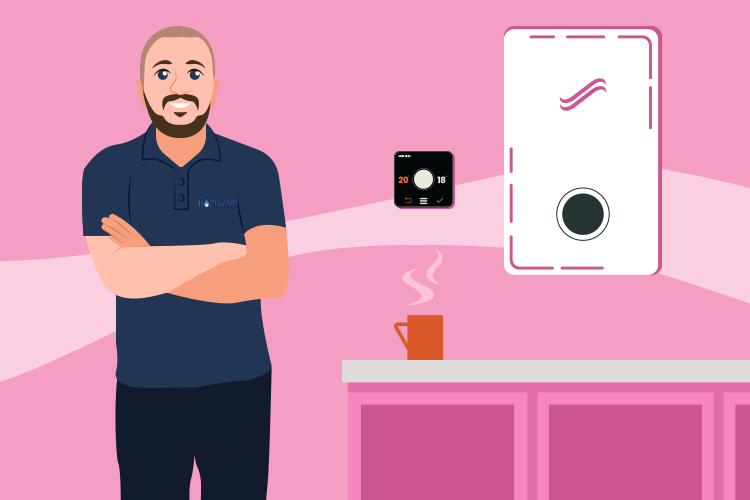Home Heating Terms you Should Know
Understanding Home Heating Terms: A Simple Guide for Homeowners
When it comes to heating your home, the terms and boiler types can feel confusing. From combi boilers to TRVs and smart controls, knowing what everything means helps you make better choices and keep your system running efficiently. Here’s an easy guide to the most common home heating terms explained.

Combi, System and Regular Boilers Explained
Combi boilers (short for combination) heat water directly from the mains, so there’s no need for a hot water cylinder or tank. They’re great for smaller homes or flats where space is limited, and you want instant hot water on demand. The main downside is they can struggle to supply hot water to more than one tap or shower at the same time.
System boilers work with a separate hot water cylinder, making them ideal for medium to large homes that need hot water in multiple rooms at once. They’re more efficient than older systems and take up less space than a regular boiler setup because they don’t need a cold water tank in the loft.
Regular boilers (sometimes called conventional or heat-only) use both a hot water cylinder and a cold water storage tank. They’re best for larger homes with traditional heating systems or where water pressure is low. While they take up more space, they can easily supply several bathrooms with hot water at once.
Which Boiler Should You Choose?
The right boiler depends on your home and lifestyle:
- Combi boiler – best for smaller homes or flats with one bathroom.
- System boiler – ideal for family homes with higher hot water demand.
- Regular boiler – suits homes with low mains pressure or multiple bathrooms.
A Gas Safe Registered heating engineer can assess your property and recommend the most efficient option for your needs.
What Does Condensing Mean?
All modern boilers are condensing boilers. This simply means they’re designed to recover heat that would otherwise escape through the flue. By reusing that energy, they reach efficiency levels of around 90% or more, helping you save money on gas bills while reducing your carbon footprint.
Flow Rate and Water Pressure
Flow rate measures how much water comes through your taps or shower per minute. It affects how strong your hot water feels. Water pressure is the force that pushes the water through your pipes.
- If your shower feels weak, your flow rate might be too low.
- Combi boilers rely heavily on mains water pressure, so check this before installation.
- System or regular boilers are less affected by mains pressure.
Smart Controls and Thermostats
Modern smart heating controls allow you to manage your heating through an app or voice assistant. You can schedule heating times, adjust temperatures room by room, and even monitor your energy use.
- Set different temperatures for each room.
- Control your heating remotely from your phone.
- Save energy by heating only the rooms you use.
TRVs – Thermostatic Radiator Valves
TRVs let you control the temperature of each radiator individually. For example, you can keep the living room warm while keeping bedrooms cooler. They’re simple to fit and can reduce your overall heating costs by preventing wasted heat in unused rooms.
Bleeding Your Radiators
If your radiators feel cold at the top but warm at the bottom, they may need bleeding. This means releasing trapped air inside, which helps hot water circulate properly again. It’s an easy DIY task with a radiator key and can make your heating system more efficient and quieter.
Final Thoughts
Understanding these basic home heating terms makes it easier to look after your home, save energy and get the best performance from your system. Whether you’re choosing a new boiler, setting up smart controls, or just learning to bleed your radiators, a little knowledge goes a long way in keeping your heating running smoothly all year round.
If your looking for any heating related assistance or looking for some advice, get in touch with our knowledgeable team today.
